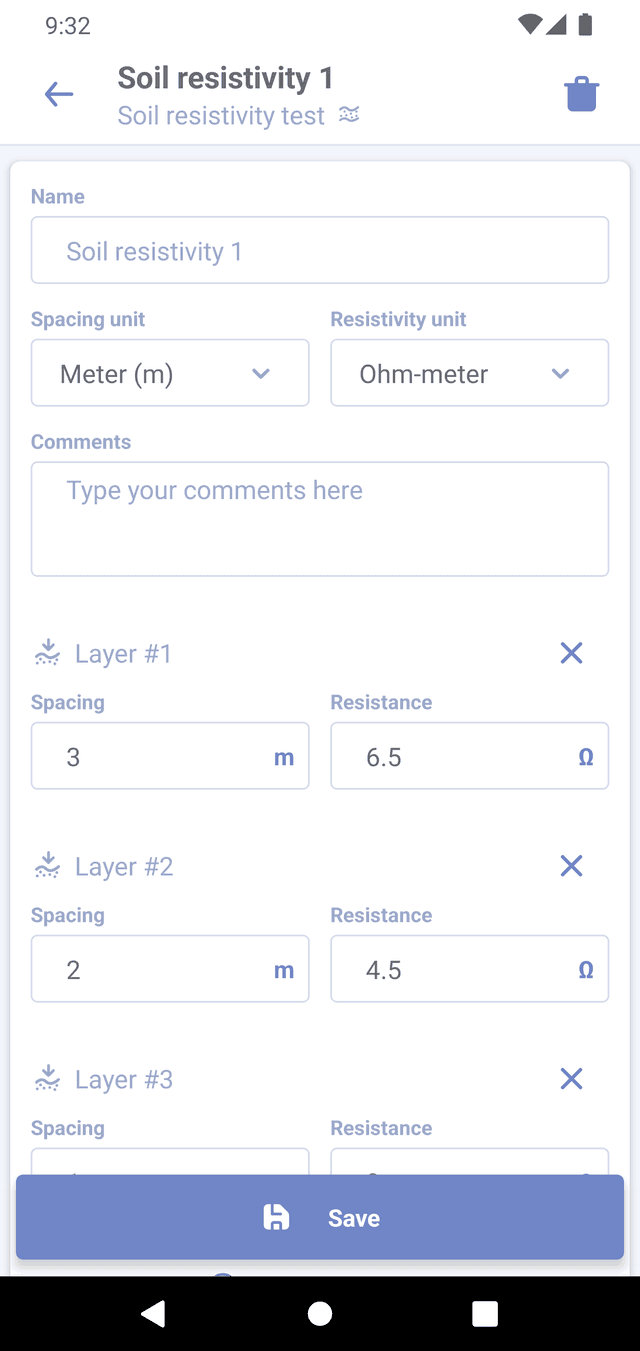Creating test point readings
Test point readings are smaller blocks that can only exist whithin a test point. There are 11 types of readings, and a test point can have any number of any type of readings or no readings at all. Here are the types of readings:
To create a new reading press "Add reading" button and select a reading type.
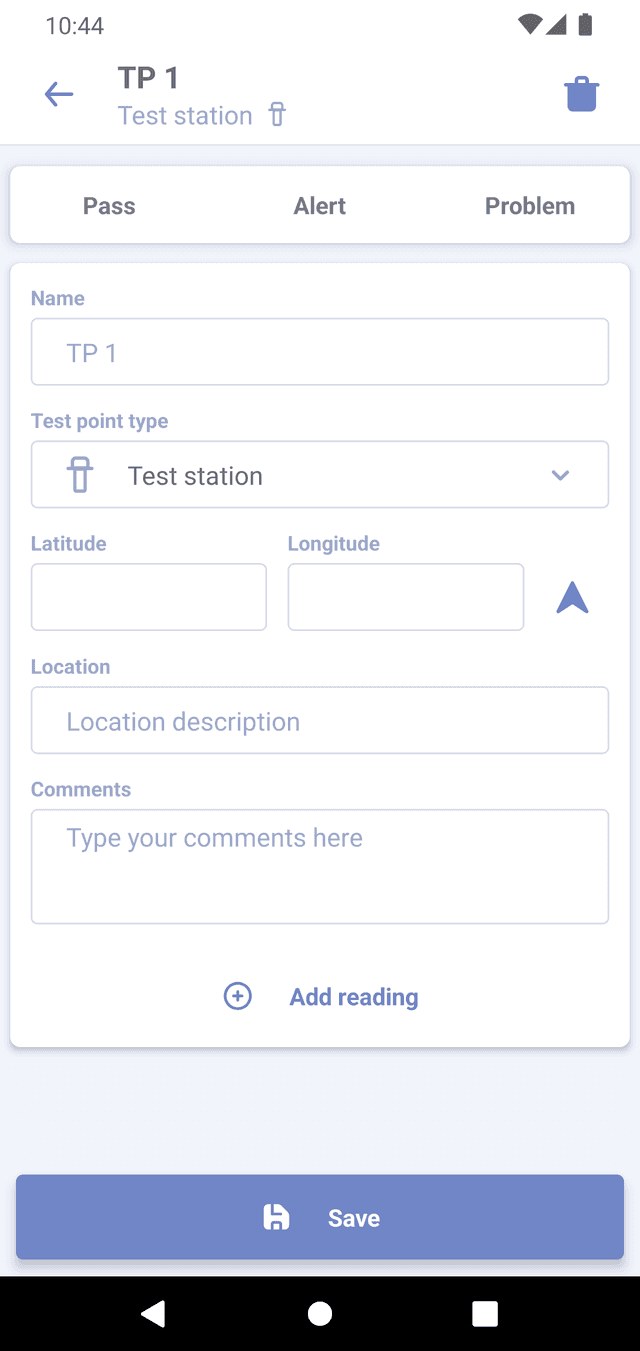
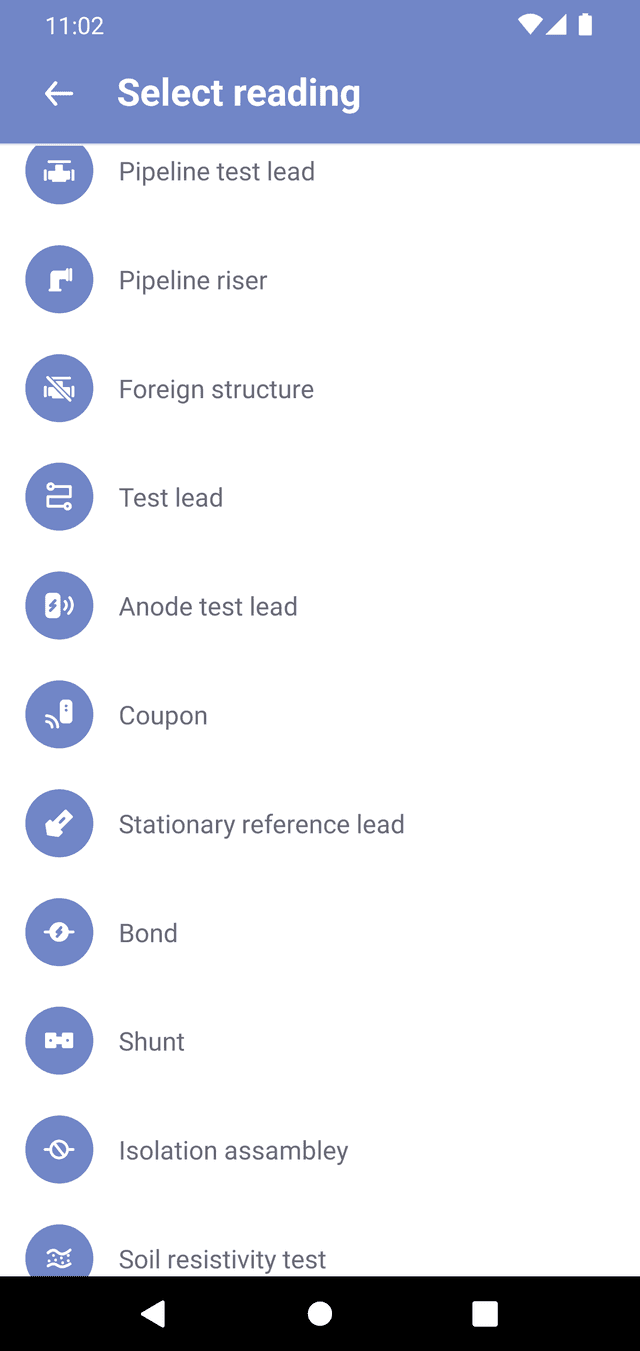
Test point reading types
Here is a list of reading types that can be created in Corpad:
Pipeline test lead
This reading describes a test lead attached to the pipe. You can specify the pipeline it belongs to, along with properties such as wire gauge, color, and potential readings. (see Potentials)
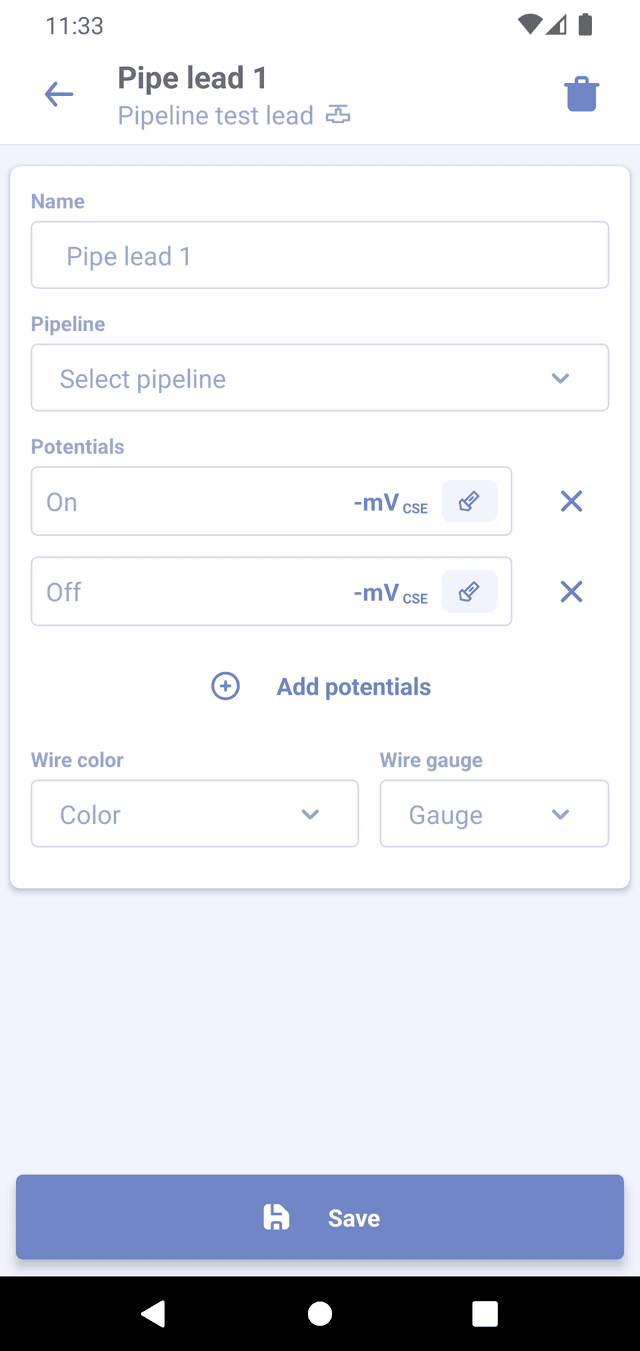
Pipeline riser
This reading refers to a single pipe riser or an above-ground structure connected to the pipe. You can assign it to a pipeline and provide information about potentials and pipe size.
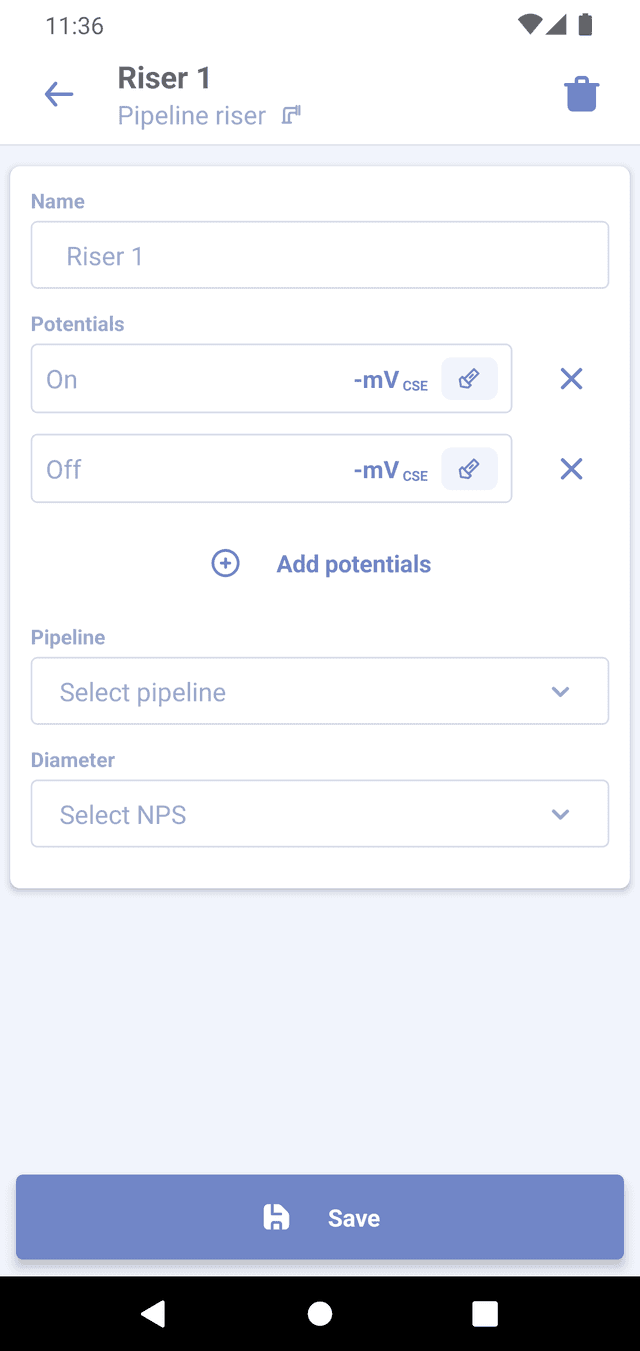
Foreign structure
This reading describes an unprotected and/or a foreign structure that is not part of a survey structure. It has potentials and name properties.
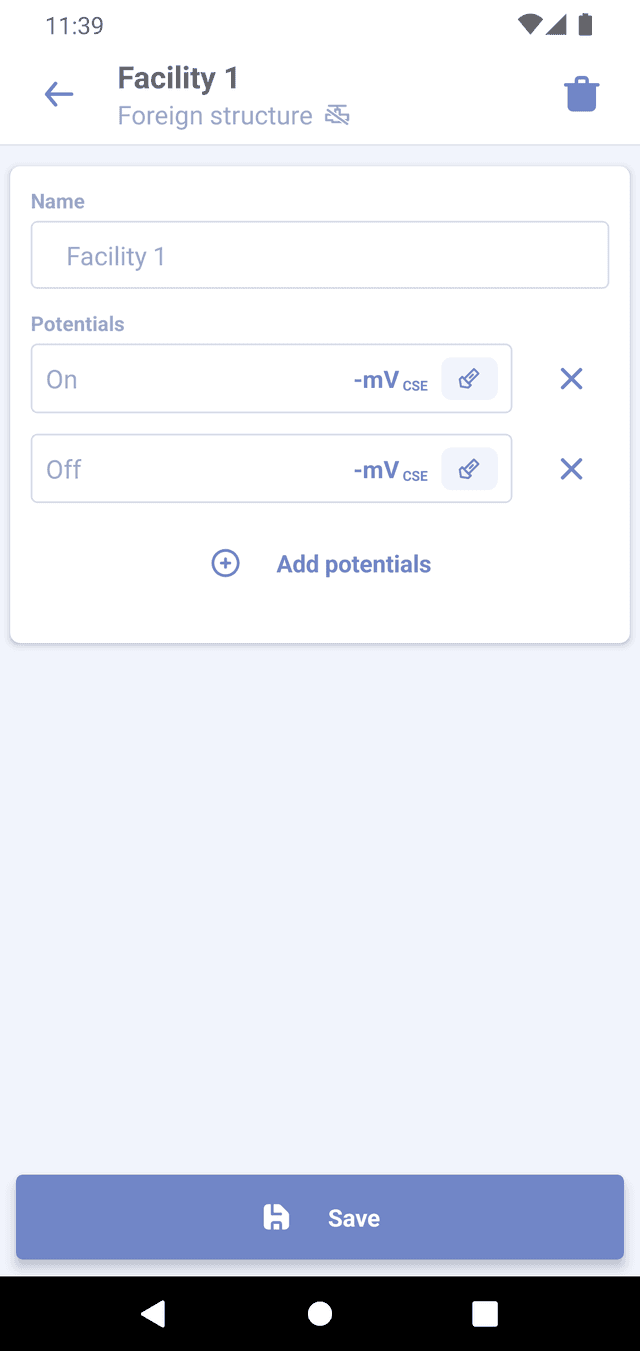
Test lead
This reading describes any test lead that cannot be assigned to any other available types (e.g. for casing). It has potentials and name properties.
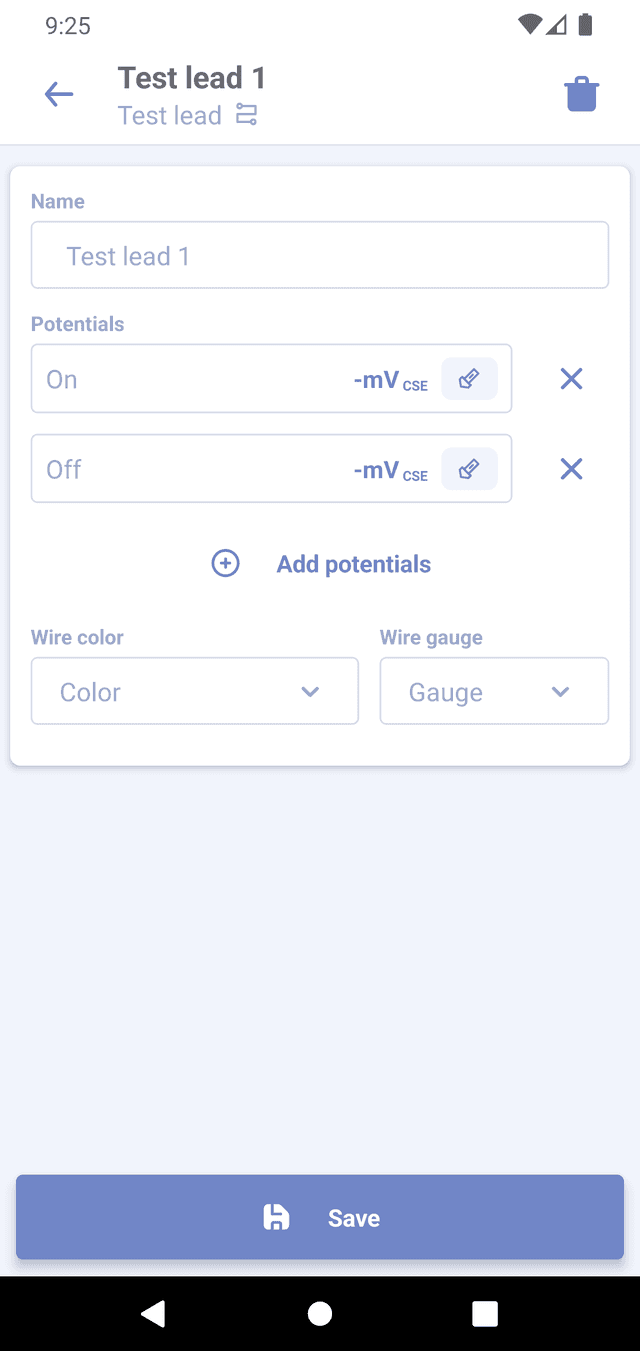
Anode test lead
This reading describes a test lead connected to a galvanic anode. It includes properties such as wire gauge, color, and anode material (e.g., Magnesium, Aluminum).
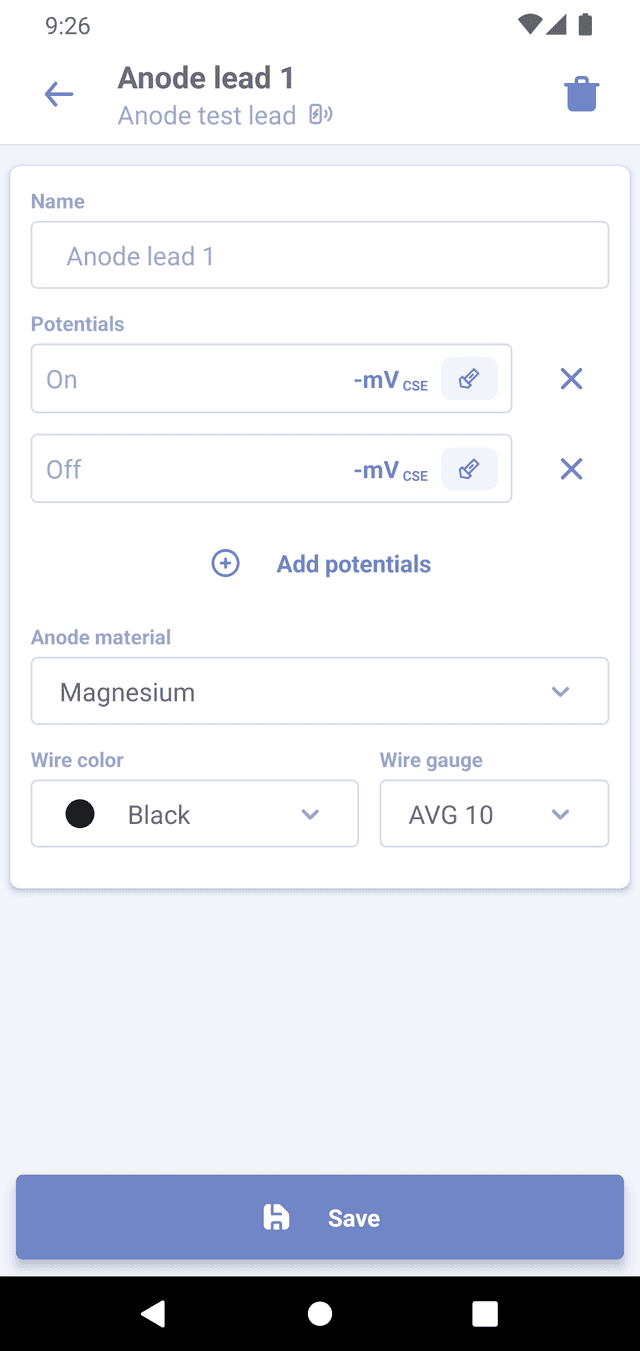
Coupon
This reading describes a test lead attached to a corrosion coupon. It includes potentials, wire properties, and coupon details such as type (AC/DC), area, and current. “Connected to” property declares what other reading(pipe test lead, or riser) in the test point the coupon is attached to.
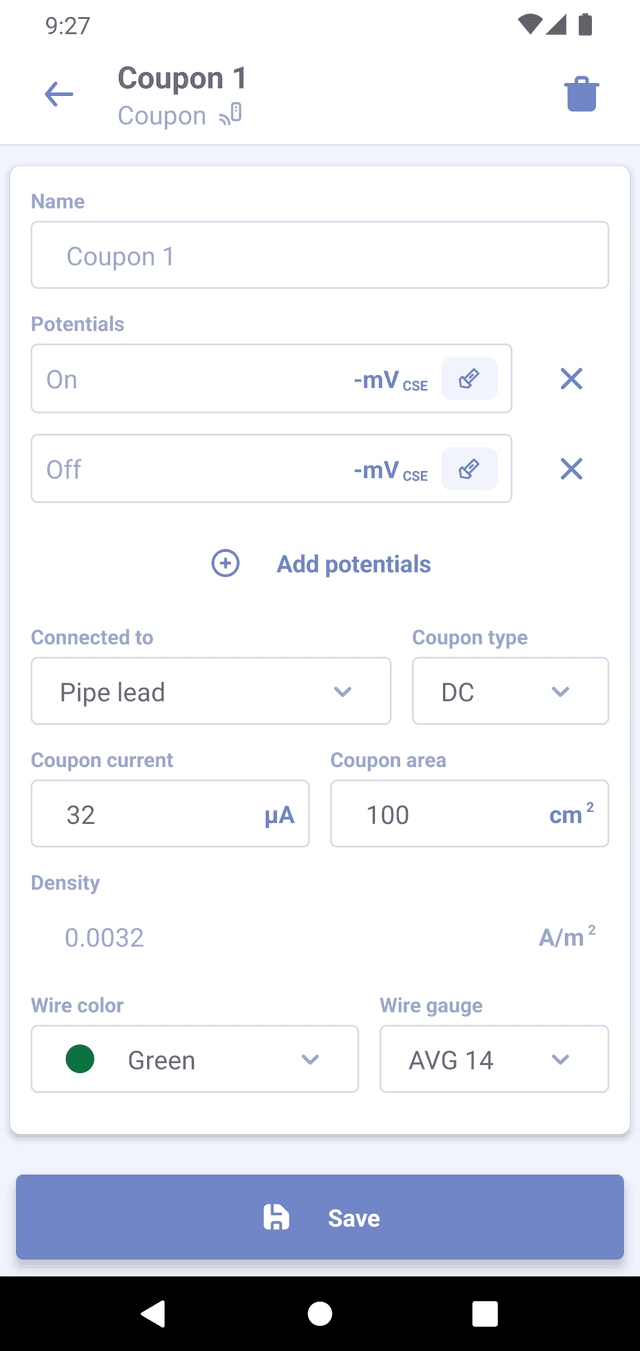
Stationary reference cell
This reading describes a test lead connected to a stationary reference cell. It has potentials, wire properties, and reference cell type (e.g., Copper Sulphate, Zinc).
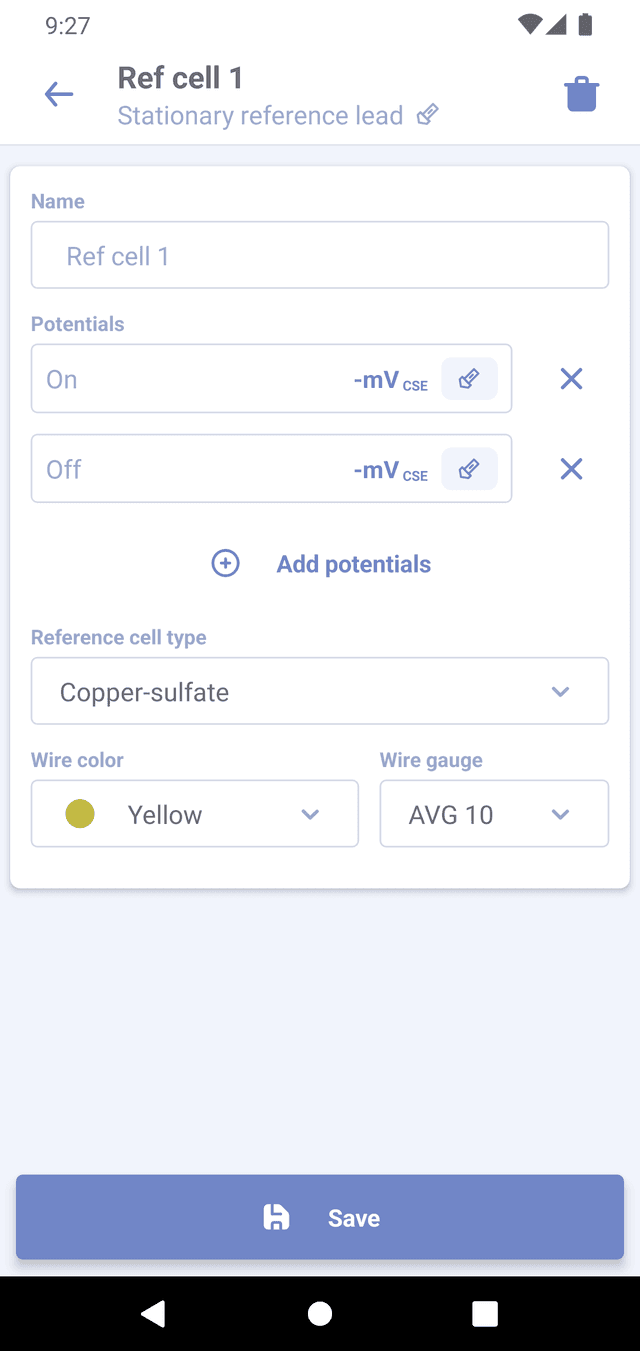
Bond
This reading describes a bond between two or more other readings within a test point. It is used to record current value and its direction between two or more readings ('Pipeline test lead' to 'Anode test lead', 'Pipeline test lead' to 'Pipeline test lead' and etc.)
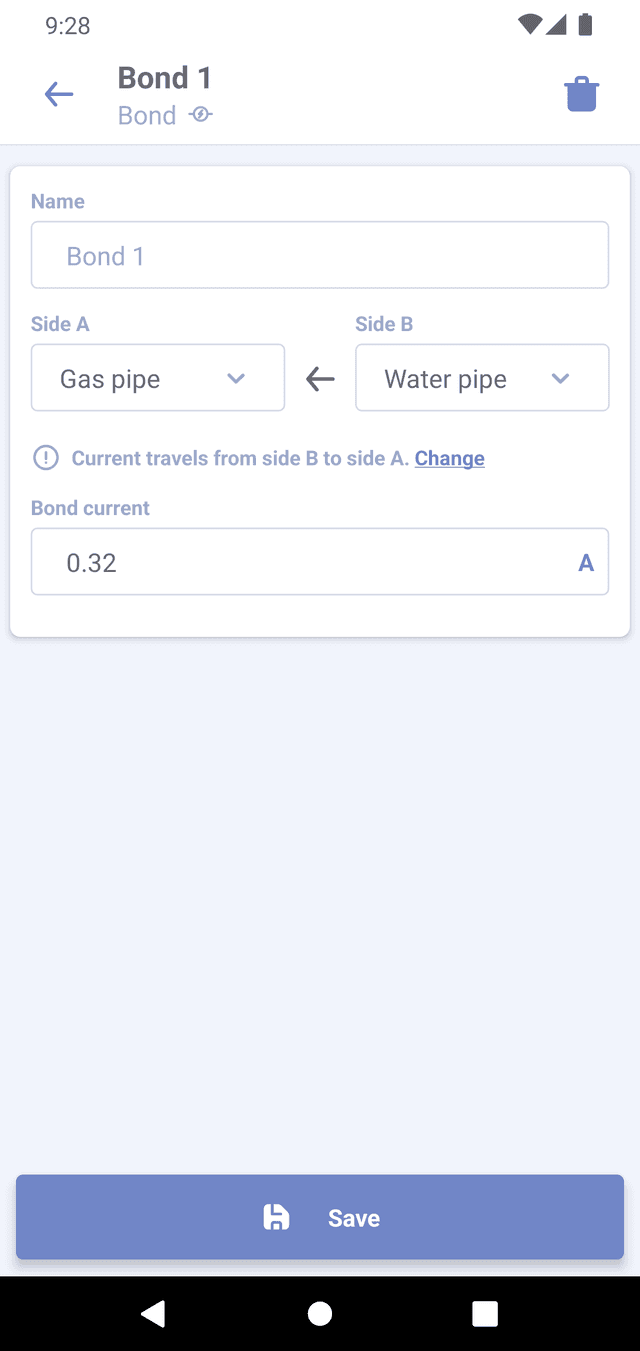
Shunt
This reading refers to a connection between readings using a shunt. It includes properties such as the readings it connects, the resistance of the shunt, and the voltage drop measured across it.
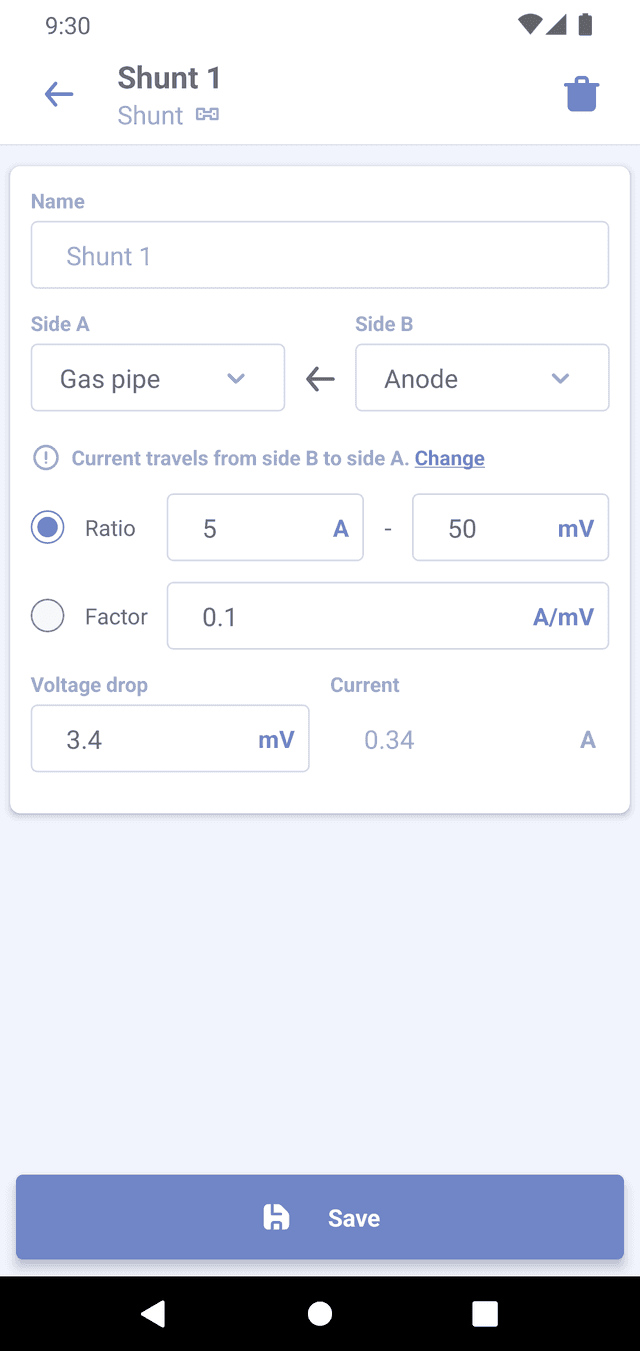
Current is calculated based on voltage drop and shunt ratio/factor. You cannot edit current in the shunt reading, use 'Bond' reading instead.
Isolation assembly
This reading describes a point of isolation between risers and/or foreign structures. When isolation is failed (shorted), current value and direction can be recorded.
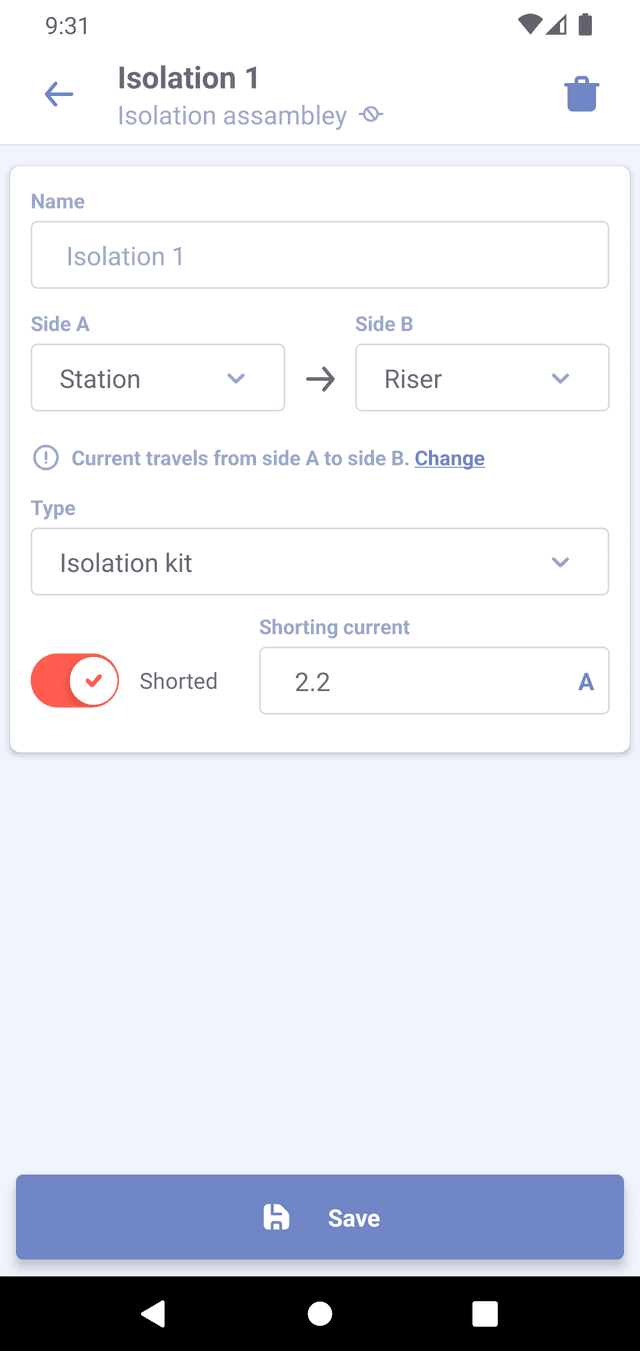
Soil resistivity test
This reading describes a dataset with soil resistivity measurement results. The user can add layers with spacing and resistance values, and the average and layer resistivity will be calculated automatically and stored inside the reading.
